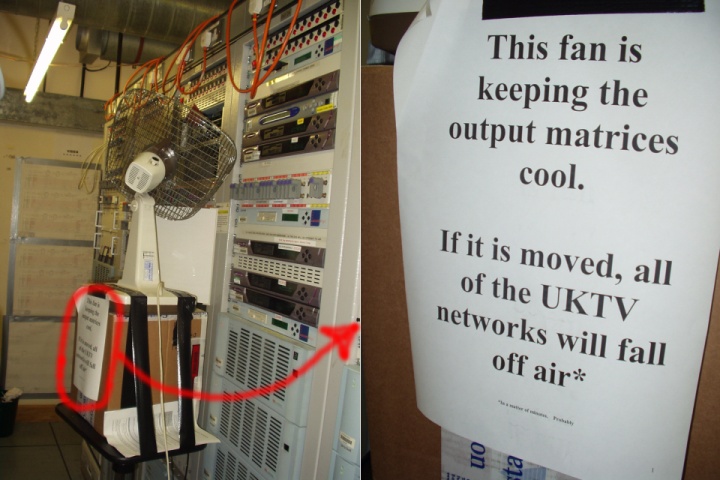That's Not Part of Our Testing
by in Feature Articles on 2008-07-31It wasn't often that Marcus saw his boss Harry scrambling to reach the mute button on his phone, simultaneously erupting into convulsing laughter. Between gasps for breath, he heard Harry say "bestiality" only to start laughing even harder.
Marcus, Harry, and company had recently gotten a contract to do security analysis for a mid-sized document management firm that we'll call Initrode. Their primary contact was Brad — a well-intentioned but scatterbrained (read: borderline incompetent) employee. Marcus would be working on penetration testing for Initrode's network. So why was Harry laughing? Well, it all started earlier that day.

 Jun 08
Jun 08
 "Oh, hey, that's weird." One of Initrode Global Insurance's accountants spotted an error on a printout of the previous day's sales report during her daily review. She dug through her records and tried to isolate the small, but still troubling, discrepancy between the totals. After reading through several previous days' reports and asking around, she couldn't find anything that could've caused the error. She circled the incorrect number, wrote the correct total, and took it to her boss's office.
"Oh, hey, that's weird." One of Initrode Global Insurance's accountants spotted an error on a printout of the previous day's sales report during her daily review. She dug through her records and tried to isolate the small, but still troubling, discrepancy between the totals. After reading through several previous days' reports and asking around, she couldn't find anything that could've caused the error. She circled the incorrect number, wrote the correct total, and took it to her boss's office. Back in 1919, Proffitt’s opened their first department store in downtown Maryville, TN. While it didn’t quite have the prestige of a big city department store like Saks Fifth Avenue, it certainly had the technology of one.
Back in 1919, Proffitt’s opened their first department store in downtown Maryville, TN. While it didn’t quite have the prestige of a big city department store like Saks Fifth Avenue, it certainly had the technology of one. Keeping hundreds of millions of sheets of paper on file isn't easy, so the IRS had an application built to computerize their records. It'd scan paper tax returns into a WORM (Write Once, Read Many) drive system and record lookup data in a database. That way they could filter by any fields they recorded in the database and access a scanned image of the tax return for any further information using a simple app, which sure beat the old method of data retrieval — digging through boxes, incurring huge wait times.
Keeping hundreds of millions of sheets of paper on file isn't easy, so the IRS had an application built to computerize their records. It'd scan paper tax returns into a WORM (Write Once, Read Many) drive system and record lookup data in a database. That way they could filter by any fields they recorded in the database and access a scanned image of the tax return for any further information using a simple app, which sure beat the old method of data retrieval — digging through boxes, incurring huge wait times. At large, multinational companies, change is slow because of The Process. Not that Matt had any major problems with The Process — he knew what he was getting into when he started his job. A change begets meetings, which beget approvals, which beget forms that have to be signed in triple-triplicate, which beget more meetings, and maybe after a month or two you will have successfully added a column to a report.
At large, multinational companies, change is slow because of The Process. Not that Matt had any major problems with The Process — he knew what he was getting into when he started his job. A change begets meetings, which beget approvals, which beget forms that have to be signed in triple-triplicate, which beget more meetings, and maybe after a month or two you will have successfully added a column to a report. Merv was ready to wash his hands of his last job and to get them dirty at his new one. Now that he was a contractor, he'd be making more, and he'd have a much better environment. This was the first time he'd be working on a team, his first time at a company with dedicated testers, and his first time at an environment that was going to use source control. Merv hadn't used any source control software before, but he had seen it in use and even read up on some popular source control systems.
Merv was ready to wash his hands of his last job and to get them dirty at his new one. Now that he was a contractor, he'd be making more, and he'd have a much better environment. This was the first time he'd be working on a team, his first time at a company with dedicated testers, and his first time at an environment that was going to use source control. Merv hadn't used any source control software before, but he had seen it in use and even read up on some popular source control systems.